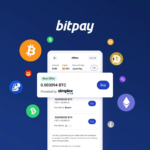About Geeq Airdrop
Geeq Airdrop is a public blockchain platform that helps more than one impartial or interoperable blockchains, every proven through a proprietary set of protocols that produce audit-equipped ledgers. Geeq is primarily based totally on a brand new blockchain consensus protocol referred to as Proof of Honesty(PoH). PoH empowers customers who preserve tokens at the platform to decide for themselves whether or not the community of validating nodes is behaving honestly.
This permits Geeq to offer 99% Byzantine Fault Tolerance (BFT) even as turning in speedy transaction finality at extraordinarily low transaction cost. Geeq and BitMax are together airdropping a complete of 20,000 USDT to the airdrop participants. Create an account at BitMax, whole KYC, whole easy social obligations and post your info to the airdrop to get hold of as much as three.three GEEQ tokens.
Geeq Airdrop provides an answer to all of these problems. Let’s begin by describing what Geeq is. An instance of a geeqchain is any blockchain that uses Geeq’s validation protocols and architecture (described below). The set of all instances collectively form an ecosystem of separate but interoperable blockchains that make up the Geeq Platform. Each geeqchain extends from its own genesis block created by Geeq which guarantees the integrity of security of the instance.
| Platform | Token Per Claim | KYC | Website |
|---|---|---|---|
| ETH | Up to 3.3 GEEQ | KYC for users is NOT a requirement | Click Here To Visit |
Embrace Blockchain with Confidence
Geeq Airdrop is a multi-blockchain platform secured by the Proof of Honesty protocol (PoH), safe enough for your most valuable data, cheap enough for IoT, and flexible enough for any use.
Geeq Utility
$GEEQ is a utility token used to pay nodes for the validation and virtual machine services they provide to Geeq’s multi-chain ecosystem. $GEEQ is also used as a staking token for the good behavior bonds that help ensure honest behavior by the validation network. As a purely transactional cryptocurrency, $GEEQ is also suitable for use in micropayment and other payment applications.
Settlement of Fees
Users are responsible for any transaction fees associated with token acquisition. ETH, BTC, USDT will be valued at the calculated USD price.
Key Features
Proof of Honesty Protocol™
99% Byzantine Fault Tolerance
Edge Security
Limitless Scaling
No Mainchain
Low Cost
Innovative Tokenomics
Patent-Pending Technology
Geeq’s Limitless Ecosystem
Unsurpassed Security.
Geeq Airdrop has developed a proprietary protocol called Proof of HonestyTM that provides the security necessary for large scale, decentralized commerce.
Built to Last.
Geeq is built, from the ground up, to provide foundational security for a bright, unending future. Individual blockchains can be customized for : efficiency and low costs, flexibility of applications and smart contracts, interoperability and federated systems, and upgrade paths for the quantum age.
Everyone Wins.
Geeq Airdrop entire ecosystem is designed to provide incentives for everyone to share in the surplus of participating in a new, open, and accessible digital services economy. Every action is voluntary; if you provide value, you will be paid; and Geeq’s multi-chain platform means you can vote with your feet.
Geeq’s Workflow
Geeq also takes a very different approach to building a chain and keeping a ledger than existing protocols. This begins with Geeq’s workflow:
- A user chooses any node in the validation network of the chain he wishes to use and sends it a transaction request.
- Nodes wait for transactions to arrive (ten seconds by default) and then group these requests into a Node Transaction Bundle (NTB), generate a header, and cryptographically sign the whole thing with their private keys.
- Nodes send these NTBs to the current hub.
- The hub groups these NTBs together into a Hub Transaction Bundle (HTB), signs it with its private key, and then sends the HTB back to each of the nodes.
- Each node separately and independently considers each candidate transaction in the HTB and builds the next block in the chain with the ones that it deems to be valid.
- Each node updates its view of the Current Ledger State (CLS) using its block of valid transactions.








